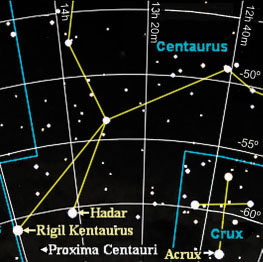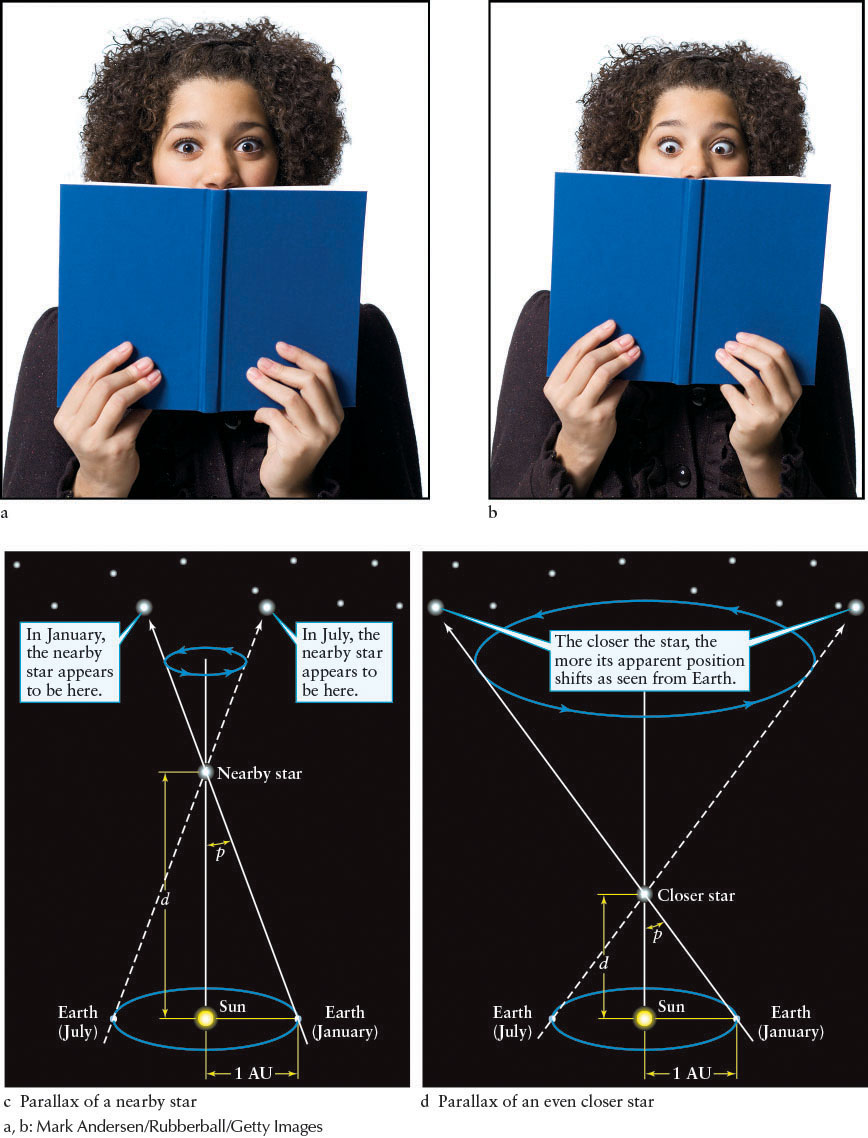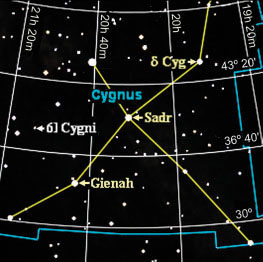341
CHAPTER [strong]11[/strong]

Characterizing Stars
WHAT DO YOU THINK?
 How near to us is the closest star other than the Sun?
How near to us is the closest star other than the Sun?
 How luminous is the Sun compared with other stars?
How luminous is the Sun compared with other stars?
 What colors are stars, and why do they have these colors?
What colors are stars, and why do they have these colors?
 Are brighter stars hotter than dimmer stars?
Are brighter stars hotter than dimmer stars?
 Compared to the Sun, what sizes are other stars?
Compared to the Sun, what sizes are other stars?
 Are most stars isolated from other stars, as the Sun is?
Are most stars isolated from other stars, as the Sun is?
Answers to these questions appear in the text beside the corresponding numbers in the margins and at the end of the chapter.
342
Legend tells of a race of remarkable insects, the Ephemera, that inhabited a great forest. These noble creatures were blessed with great intelligence, but were cursed with tragically short life spans. To the Ephemera, the forest seemed eternal and unchanging. Members of most generations lived out their brief lives without ever noticing any changes in their leafy world. Nevertheless, careful observations and reasoning led some Ephemera to postulate that the forest was not static. They began to suspect that small green shoots grew to become huge trees and that mature trees eventually died, toppled over, and littered the forest with rotting logs, enriching the soil for future trees. Although unable to witness these transformations personally, the Ephemera predicted the existence of life processes stretching over the mind-boggling periods of many years.
To us, the cosmos seems eternal and unchanging; the views that greet us every night are virtually indistinguishable from those seen by our ancestors. This permanence, however, is an illusion. We see the stars because they emit vast amounts of radiation, created as a result of converting one element into another in their interiors. Because all stars contain finite amounts of the elements fueling these emissions, at different times in the life of each star, its various fuels are used up. This process causes the stars to change profoundly.
We do have one advantage over the Ephemera, who were so small that they could see only a few trees, leaves, shoots, and rocks. Astronomers are witnesses to literally billions of stars in various stages of evolution. Therefore, although we cannot see any one star go through more than a tiny fraction of the process, we can see every stage of stellar evolution. By understanding the changes that stars undergo, we gain insight into our place in the cosmos. We begin our journey to the stars by learning the properties of stars that astronomers used to develop models of why stars shine and how they evolve.
In this chapter you will discover
 that the distances to many nearby stars can be measured directly, whereas the distances to farther ones are determined indirectly
that the distances to many nearby stars can be measured directly, whereas the distances to farther ones are determined indirectly
 the observed properties of stars on which astronomers base their models of stellar evolution
the observed properties of stars on which astronomers base their models of stellar evolution
 how astronomers analyze starlight to determine a star’s temperature and chemical composition
how astronomers analyze starlight to determine a star’s temperature and chemical composition
 how the total energy emitted by stars and their surface temperatures are related
how the total energy emitted by stars and their surface temperatures are related
 the different classes of stars
the different classes of stars
 the variety and importance to astronomers of binary star systems
the variety and importance to astronomers of binary star systems
 how astronomers calculate stellar masses
how astronomers calculate stellar masses
11-1 Distances to nearby stars are found using stellar parallax
Nothing in human experience prepares us for understanding the distances between the stars. On Earth, the greatest distance we read about in our daily lives is perhaps halfway around the globe, 20,000 km, which is about the distance from New York City to Perth, Australia. By observing the Sun, the Moon, and planets, we have some comprehension of hundreds of thousands, or even millions, of kilometers or miles.
 How far away are the nearest stars outside our solar system? Ask 10 people and you will probably hear answers that range from millions to billions of kilometers or miles. In fact, the closest star other than the Sun, Proxima Centauri, in the constellation Centaurus, is about 40 trillion km (4.0 × 1013 km or 25 trillion mi) away. Light takes more than 4 years to get here from there. Most of the stars you see in the night sky are many times farther away. (Centaurus is not visible from most of the northern hemisphere, as you can see by the negative declinations on the margin star chart on this page.) Given such enormous separations between astronomical bodies, how do we measure the distance to a nearby star?
How far away are the nearest stars outside our solar system? Ask 10 people and you will probably hear answers that range from millions to billions of kilometers or miles. In fact, the closest star other than the Sun, Proxima Centauri, in the constellation Centaurus, is about 40 trillion km (4.0 × 1013 km or 25 trillion mi) away. Light takes more than 4 years to get here from there. Most of the stars you see in the night sky are many times farther away. (Centaurus is not visible from most of the northern hemisphere, as you can see by the negative declinations on the margin star chart on this page.) Given such enormous separations between astronomical bodies, how do we measure the distance to a nearby star?

Because Proxima Centauri is closer to us than other stars, its position among the background stars changes as Earth orbits the Sun. We see precisely the same effect when, for example, Mars appears to have retrograde motion as we pass between it and the Sun (see Figures 2-2 and 2-3), and it is the effect that Tycho Brahe sought while observing the supernova of 1572 (see Figure 2-7). The apparent motion of nearby stars among the background of more distant stars, due to Earth’s motion around the Sun, is called stellar parallax.
Parallax is an everyday phenomenon. We experience it when nearby objects appear to shift their positions against a distant background as we move (review Figure 2-6). We also experience it continuously when we are awake, because our eyes change angle when looking at objects at different distances. As you view a tree 10 m away, your eyes cross only slightly (Figure 11-1a). Looking at something closer, say, this book, your eyes cross much more in order for both of them to focus on the same word (Figure 11-1b). The parallax angle formed between your eyes and the tree or the book lets your brain judge just how close these objects are to you. Working out distances of nearby stars is done similarly, but it requires painstaking measurements of tiny angles and a little geometry.

 Using Parallax to Determine Distance (a, b) Our eyes change the angle between their lines of sight as we look at things that are different distances away. Our eyes are adjusting for the parallax of the things we see. This change helps our brains determine the distances to objects and is analogous to how astronomers determine the distance to objects in space. (c) As Earth orbits the Sun, a nearby star appears to shift its position against the background of distant stars. The star’s parallax angle (p) is equal to the angle between the Sun and Earth, as seen from the star. The stars on the scale of this drawing are shown much closer than they are in reality. If drawn to the correct scale, the closest star, other than the Sun, would be about 5 km (3.2 mi) away. (d) The closer the star is to us, the greater the parallax angle p. The distance to the star (in parsecs) is found by taking the inverse of the parallax angle p (in arcseconds), d = 1/p.
Using Parallax to Determine Distance (a, b) Our eyes change the angle between their lines of sight as we look at things that are different distances away. Our eyes are adjusting for the parallax of the things we see. This change helps our brains determine the distances to objects and is analogous to how astronomers determine the distance to objects in space. (c) As Earth orbits the Sun, a nearby star appears to shift its position against the background of distant stars. The star’s parallax angle (p) is equal to the angle between the Sun and Earth, as seen from the star. The stars on the scale of this drawing are shown much closer than they are in reality. If drawn to the correct scale, the closest star, other than the Sun, would be about 5 km (3.2 mi) away. (d) The closer the star is to us, the greater the parallax angle p. The distance to the star (in parsecs) is found by taking the inverse of the parallax angle p (in arcseconds), d = 1/p.
343
344
As Earth moves from one side of its orbit around the Sun to the other, a nearby star’s apparent position shifts among the more distant stars. Referring to Figure 11-1c, the parallax angle, p, is half the angle by which Earth shifts positions through the year as seen from that star, measured in arcseconds. The difference in parallax angles for stars at different distances can be seen by comparing Figures 11-1c and 11-1d. An Astronomer’s Toolbox 11-1: Distances to Nearby Stars explores some details of how distances are determined from parallax angles.
Margin Question 11-1
Question
For which object—the Moon, Mars, or the star Sirius—is the parallax angle smallest as seen from Earth?
The first stellar parallax measurement was made in 1838 by Friedrich Wilhelm Bessel (1784–1846), a German astronomer and mathematician. He found the parallax angle of the star 61 Cygni to be  ″, and so its distance is about 3 pc (see An Astronomer’s Toolbox 2-1: Units of Astronomical Distance to further review distance units). The precision of stellar parallax measurements is limited by the angular resolution of the telescope, as discussed in Section 3-6. The stellar parallax method using Earth-based telescopes gives stellar distances only up to about 100 pc because parallax angles smaller than about 0.01″ are difficult to measure from Earth-based observatories.
″, and so its distance is about 3 pc (see An Astronomer’s Toolbox 2-1: Units of Astronomical Distance to further review distance units). The precision of stellar parallax measurements is limited by the angular resolution of the telescope, as discussed in Section 3-6. The stellar parallax method using Earth-based telescopes gives stellar distances only up to about 100 pc because parallax angles smaller than about 0.01″ are difficult to measure from Earth-based observatories.

Telescopes in space are unhampered by our atmosphere and therefore have higher resolutions than Earth-based telescopes. Parallax measurements made in space thus enable astronomers to determine the distances to stars well beyond the reach of ground-based observations.
AN ASTRONOMER’S TOOLBOX 11-1: Distances to Nearby Stars
Recall from An Astronomer’s Toolbox 2-1 that 1 parsec (1 pc) is the distance at which two objects 1 AU apart appear 1 arcsec apart. This distance is 3.09 × 1013 km, or 206,265 AU. The word parsec (from parallax second) originated from the use of parallax to measure distance. Using parsecs, we can write down an especially simple equation for the distances to stars:
Distance to a star in parsecs =

or

where d is the distance to the star and p is the parallax angle of that star.
The equation is only this simple in these units, which is one of the main reasons why many astronomers discuss cosmic distances in parsecs rather than light-years. We will continue to primarily use light-years (ly) throughout this book because they are more intuitive. In light-years, this same equation becomes approximately
Distance to a star in light-years ≈

or

where dly is the distance to a star in light-years.
Example: The star nearest to the solar sytem, Proxima Centauri, has a parallax angle of 0.77 arcsec, and so its distance is 1/0.77, or approximately 1.3 pc. Equivalently, Proxima Centauri is 4.24 ly away. The parallax of Proxima Centauri is comparable to the angular diameter of a dime seen from a distance of 3 km. The parallax angles of the 25 nearest stars are listed in Appendix Table E-5.
Try these questions: What is the parallax angle of a star 100 ly away? How far away is a star with a parallax angle of 0.3850? Rigel is 773 ly away; how far away is it in parsecs? What is its parallax angle in arcseconds?
(Answers appear at the end of the book.)
In 1989, the European Space Agency (ESA) launched a satellite called Hipparcos (an acronym for High Precision Parallax Collecting Satellite and named for Hipparchus (190–120 b.c.e.), an astronomer in ancient Greece who created an early classification system for stars). Although the satellite failed to achieve its proper orbit, astronomers used it to measure the distances to more than 2.5 million of the nearest stars up to 500 ly (150 pc) away. The success of Hipparcos has led to the 2013 launch of Gaia by the European Space Agency. This satellite will use stellar parallax measurements to determine the distances to the nearest 1 billion stars.
345
Despite the information gained from stellar parallax, astronomers need to know the distances to more remote stars for which parallax cannot yet be measured. Several methods of determining ever-greater distances will be introduced later in this chapter and in Chapters 12, 13, and 17.
Having established that different stars are at different distances from Earth, we now consider the brightnesses that stars appear to have as seen from our planet. Combining the distances and the varied brightnesses we observe will enable us to calculate how much light stars actually emit, and thereby to explore their evolution.